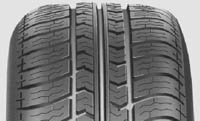|
Компания "Шина-ДВ" - Продажа автошин в Хабаровске на avtoshina-dv.ru! |
 |
 |
|

Sakishi Toyoda
In 1894, a son was born in Sakishi, who was named Kiishiro. If only he knew at that moment to which scale his business would grow ...
Already in 1924, together with his son Sakishi, he created a fully automated loom, and a couple of years later the first stone was laid in the construction of the future multi-billion dollar corporation - Toyoda Automatic Loom Works was born. This small firm that produces automatic looms will forever remain in history as the "mother" of today's Toyota.
 В январе 1968 года штаб-квартира компании переехала в новое здание в районе Ginza м Токио. В том же году был выпущен на рынок новый автомобиль Fairlady 2000, который помог компании Nissan завоевать популярность на международном рынке.
В 1969 году появился на рынке динамичный заднеприводный автомобиль Datsun 240Z, признанный самым продаваемым спортивным автомобилем в мире в 70-х гг. 500000 автомобилей Datsun 240Z было продано менее чем за 10 лет.
В начале 1970-х Nissan занимался развитием и производством ракетных двигателей и установок для запуска, тогда же компания начала расширять производственную сферу, занявшись также и производством двигателей для кораблестроительной отрасли.
In 1974, 10,000 Nissan Patrol SUVs were announced for the year. In the late 1970s, the company established itself in the off-road vehicle market.
In 1981, Nissan began promoting its vehicles worldwide under the Nissan brand as part of the company's new corporate strategy. Then in the 80s. Nissan has established two strategic manufacturing bases overseas: in 1980, Nissan Motor Manufacturing Corp., USA in the US and in 1984, Nissan Motor Manufacturing (UK) Limited in the UK. The first Datsun pickup truck rolled off the assembly line at Nissan Motor Manufacturing Corp., USA in June 1983, the first Sentra (Sunny) in March 1985.
В январе 1968 года штаб-квартира компании переехала в новое здание в районе Ginza м Токио. В том же году был выпущен на рынок новый автомобиль Fairlady 2000, который помог компании Nissan завоевать популярность на международном рынке.
В 1969 году появился на рынке динамичный заднеприводный автомобиль Datsun 240Z, признанный самым продаваемым спортивным автомобилем в мире в 70-х гг. 500000 автомобилей Datsun 240Z было продано менее чем за 10 лет.
В начале 1970-х Nissan занимался развитием и производством ракетных двигателей и установок для запуска, тогда же компания начала расширять производственную сферу, занявшись также и производством двигателей для кораблестроительной отрасли.
In 1974, 10,000 Nissan Patrol SUVs were announced for the year. In the late 1970s, the company established itself in the off-road vehicle market.
In 1981, Nissan began promoting its vehicles worldwide under the Nissan brand as part of the company's new corporate strategy. Then in the 80s. Nissan has established two strategic manufacturing bases overseas: in 1980, Nissan Motor Manufacturing Corp., USA in the US and in 1984, Nissan Motor Manufacturing (UK) Limited in the UK. The first Datsun pickup truck rolled off the assembly line at Nissan Motor Manufacturing Corp., USA in June 1983, the first Sentra (Sunny) in March 1985.
|
|